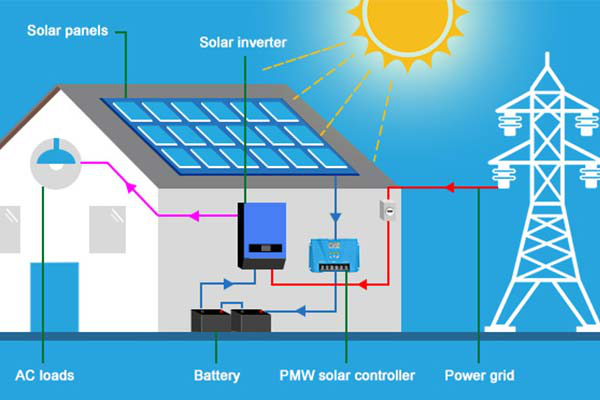Lithium batteries are widely used in energy storage systems due to their high efficiency, long life cycle, and light weight. Connecting a lithium battery to an inverter is crucial for converting the stored DC (Direct Current) energy into usable AC (Alternating Current) for household or industrial applications. Here’s a basic guide to understanding this process.
1. Selecting Compatible Equipment
The first step is choosing a compatible inverter and lithium battery system. Ensure that the battery’s voltage is within the range that the inverter supports. Most inverters are designed for 12V, 24V, or 48V systems, so the battery should match this requirement. Also, ensure the inverter’s power rating (in watts) can handle the load it will supply.
2. Battery Management System (BMS)
A Battery Management System (BMS) is integral in lithium batteries. The BMS controls the charging and discharging of the battery, preventing overcharging, undercharging, and temperature extremes that can damage the battery. Ensure the inverter is compatible with the BMS to avoid operational issues. Some inverters come with pre-built communication systems (e.g., CAN or RS485) that can interact directly with the BMS for real-time data monitoring.
3. Wiring the Connections
To connect the lithium battery to the inverter:
- Use appropriate wiring. Thick, high-gauge wires are needed to handle high currents safely.
- Connect the positive terminal of the battery to the positive input terminal of the inverter, and the negative terminal of the battery to the negative input terminal of the inverter.
- Always double-check the polarity to prevent damage to the equipment.
4. Fusing and Protection
Install a fuse or circuit breaker between the battery and inverter for protection. This fuse should match the current rating of the system. A fuse will protect against short circuits or excessive current, helping prevent potential damage to the inverter or battery.
5. Testing the System
After connection, test the system by turning on the inverter and checking the output. Use a multimeter to verify the correct voltage and ensure that the inverter is supplying AC power as expected.



2 Responses
Reading this felt like walking through a gallery of ideas, each one framed with care and presented with clarity. Your words have a way of making the abstract feel tangible, of bringing thoughts into sharp focus. I walked away from this
Thanks for your reading!